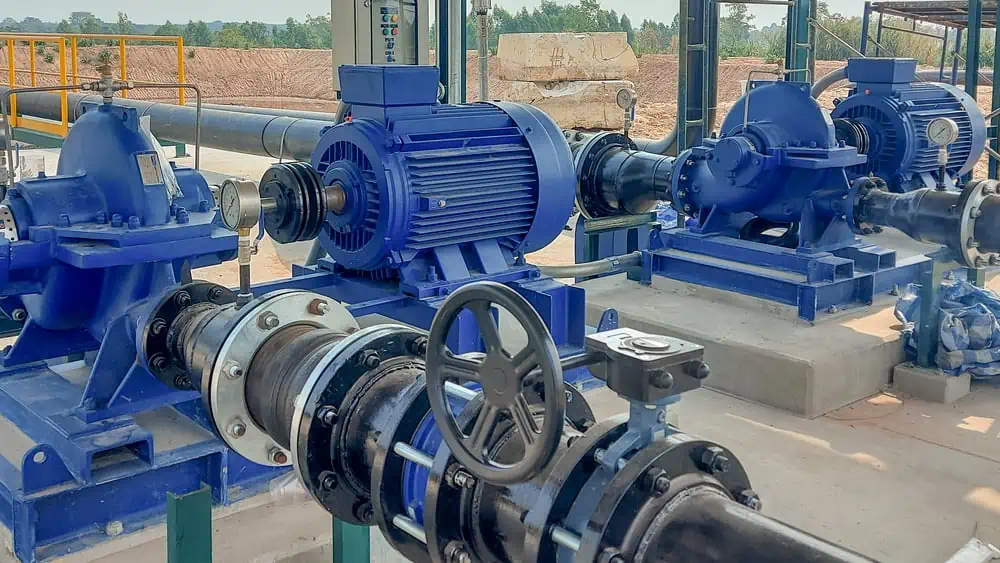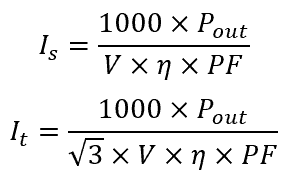The full-load amperage (FLA) of an electric motor is a value expressing the maximum amount of current to apply to the motor. Above the FLA value, any additional current will not increase motor output, and the excess energy will be dissipated as heat, which may damage the motor. Therefore, knowing the current at which a motor will provide its maximum (full) output is a key part of an engineering design involving an electric motor.

In engineering applications, motors will be either single phase or three phase. Although the process of calculation is the same, the equations for these two types of motor are different.
Single Phase Motor FLA Calculator
Three Phase Motor FLA Calculator

Elevate Your Engineering With Excel
Advance in Excel with engineering-focused training that equips you with the skills to streamline projects and accelerate your career.
Single Phase Motor FLA Equation
Calculating the FLA of a single-phase electric motor can be accomplished if the motor’s output power in horsepower (hp) is known. The following equation is used for the calculation:

where:
- I is the FLA, with units of amps
- Pout is the mechanical output power, with units of hp
- V is the voltage of the line, with units of V
- η is the motor efficiency, which has no units
- PF is the power factor, which has no units or is expressed as a percentage
The motor output will be the load that the motor is driving. The motor efficiency and power factor are two parameters that are unique to a given motor design, and will generally be specified by the motor manufacturer. However, these values can also be calculated.
Motor Efficiency
The motor efficiency specifies how effectively the motor converts the input power into output power. It is simply the ratio of the two, as follows;

where:
- Po is the output power, with units of hp
- Pi is the input power, with units of hp
For motors rated at 1 to 4 hp, an efficiency of 0.8 is typical, and for motors 5 hp and above, 0.9 should be expected.
Motor Power Factor
The motor power factor is a value between 0 and 1, and is another expression of the motor’s efficiency. Specifically, it is the ratio of the working power to the apparent power, as follows:

where:
- Pt is the power used by the motor, with units of hp
- Pa is the power delivered to the motor, with units of volt-amps
The power not used by the motor is lost as waste energy. Generally, a power factor less than 95% is considered inefficient.

Calculating Single Phase Motor FLA
When calculating the FLA of a single-phase motor, the input voltage, motor efficiency, and motor power factor are known, and the motor’s power output can be measured.
For a single-phase motor with the following parameters, the FLA is calculated as an example.
- V = 110 V
- η = 0.8
- PF = 96%
The power output of the motor Pout is 2 hp. Therefore, the FLA is calculated as follows:

Three-Phase Motor FLA Equation
For a three-phase motor, the FLA is calculated with the following equation:

Calculating Three-Phase Motor FLA
For a three-phase motor with the following parameters, the FLA is calculated as an example.
- V = 480 V
- η = 0.81
- PF = 95%
For a motor with an output power Pout of 3 hp, the FLA is calculated as follows:

Calculating FLA For Motor Power Expressed In Watts
In engineering practice using power, it is not uncommon to see values referencing kilo-watts (kW). In the case of a motor’s output power being expressed in kW, the FLA calculation changes as follows:

where Is and It are the single-phase and three-phase FLA values, respectively. Regardless of whether hp or kW are used to express the power output of the motor, the value is converted to W, with the 1000 and 746 expressing the appropriate conversion factor.
Calculating Power Output From FLA
In engineering applications involving electric motors, understanding the maximum effective current that can be applied to the motor to achieve the most efficient output is important to avoid increased current that must be dissipated as heat and can damage the motor. Because the load the motor is driving is usually known, the FLA calculation is most often used to determine the applied current.

However, if the motor parameters, input voltage, and input current are known and restricted, the maximum load (Pout) that the motor can drive can be determined by rearranging the FLA equation as follows:

Although this application of the FLA calculation is not often used, it can help engineers when choosing or designing a motor that will be needed for a specific load with specified input current and voltage. In this case, a motor with certain efficiency and power factor would be needed.
